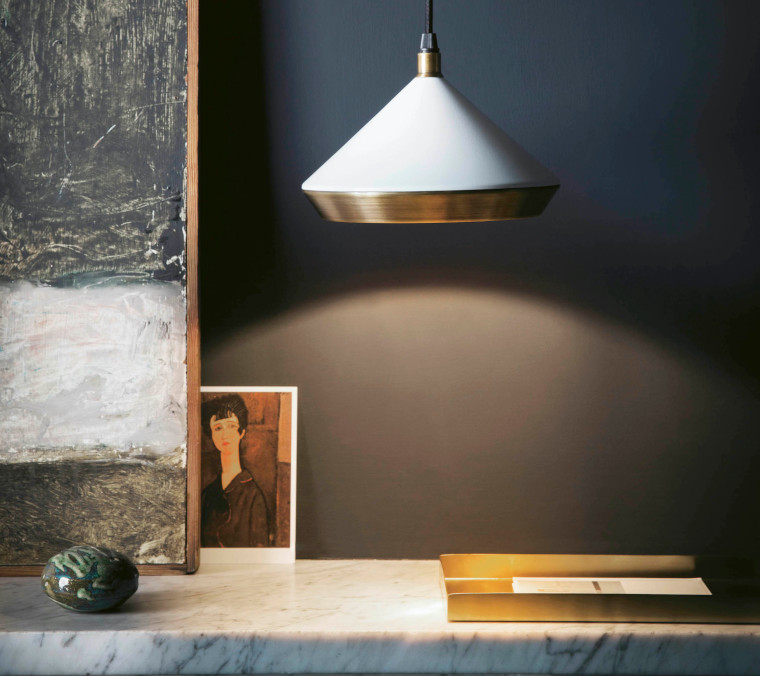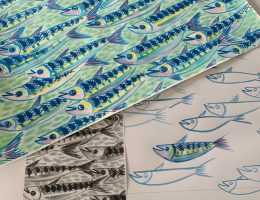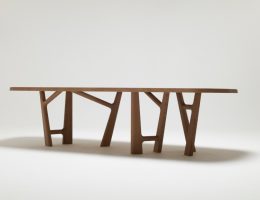Join me as I chat to Robbie LLewellyn, founder of one of my favourite lighting brands Bert Frank, and discover the appeal of designing lights inspired by the Art Deco and Bauhaus eras
Please describe the Bert Frank style. We take a lot of design cues from the mid-century, in particular art deco and Bauhaus eras. There is something intrinsic with these design styles that really resonates with how I design and I think they suit the materiality of brass perfectly.
Engineering and the industrial language of our factory in Birmingham is also at the core of the brand’s style. We have a deep respect for the heritage of British engineering, combined with timeless aesthetics reimagined for today.
What appeals to you about designing lights? The appeal is twofold. William Morris understood design, but he also understood human beings. He knew that things – possessions – only make us happy when they combine beauty with utility and vice versa. To have one without the other is unthinkable. At Bert Frank we embrace that philosophy. A table lamp or pendant is far more than a means of illumination; it is a thing of beauty to admire and touch. Equally, a lamp in the most precious materials is of no value unless it produces the lighting affects you desire. For me lighting design is where art meets engineering and design meets craft.
Secondly, lighting, good and bad, can completely transform the atmosphere of a room and the feeling of the people in it. It has a sub-conscious effect on our wellbeing and as a lighting designer you constantly seek to find new ways to use illumination to enhance a space and make it better.
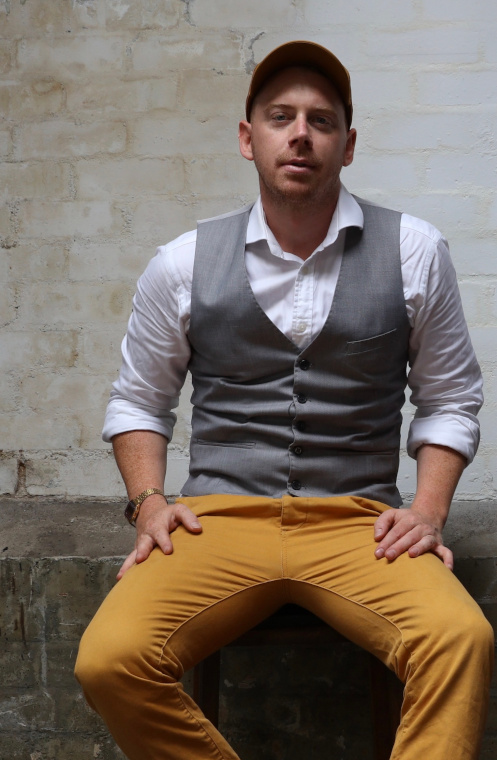
How important is it that your collection is designed and produced in the UK? Designing and producing in the UK has always been important to the brand, it’s one of the foundations we built Bert Frank upon. In Bert Frank we set out to address the misapprehension that craftsmanship here in Britain is in terminal decline and show that the time-honoured craft of metalworking is higher in the UK than anywhere else in the world.
If quality matters, British artisans deliver. Every Bert Frank light offers evidence of that. The lustre of hand-finished brass, the silky movement of hinges, the seamlessness of joints. Each intricately knurled thumb nut and elegant finial reveals craft of the highest order. Our Birmingham metalwork factory has a long history of lighting manufacturing and some of our more traditional machinery date back to the 1900s. It is no 19th century throwback, however; it’s a forward-thinking, switched-on, technologically advanced factory employing highly skilled machinists and vastly experienced fabricators – people who take immense pride in their work.
Bert Frank lamps are very much ‘hand-made’ items produced in small numbers, often to meet a customer’s precise specifications – as near bespoke as possible. I don’t think we could achieve that uniqueness if we manufactured elsewhere.
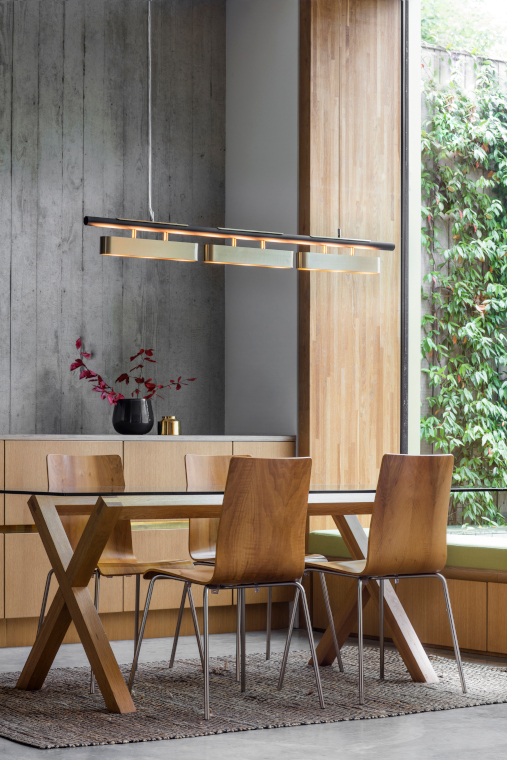
Do you have a target customer in mind when you start a design? Not really, when I start a design, I usually begin with how it will be used and where rather than who would be using it. Our designs have a timeless aesthetic so as such they appeal to a really broad customer base anyway.
Many of your lights are designed in brass, are there other materials you would like to experiment with? Brass is so versatile as a material. We work with CZ121, the finest grade of solid brass for free machining and it gives a sense of gravitas. Solid marble has been part of our handwriting for some time now and in the last year we have started to experiment with alabaster which I find as a material right now really intriguing. The creamy white alabaster which we use – a variety of gypsum widely used by sculptors since ancient Egyptian times – comes from the Aragon region of Spain, where whole palaces were built with it and where local artists still work with the material to this day. Alabaster has a wonderful softness, while being surprisingly robust and the natural creamy white marbling creates a very gentle, ambient light that is calming and welcoming.
Each piece of alabaster is different, so the diffused light has infinite variety and the eye finds that so much easier to accept. It’s like looking at clouds; nobody wants to stare straight at the sun. In terms of other materials, you’ll have to wait and see!
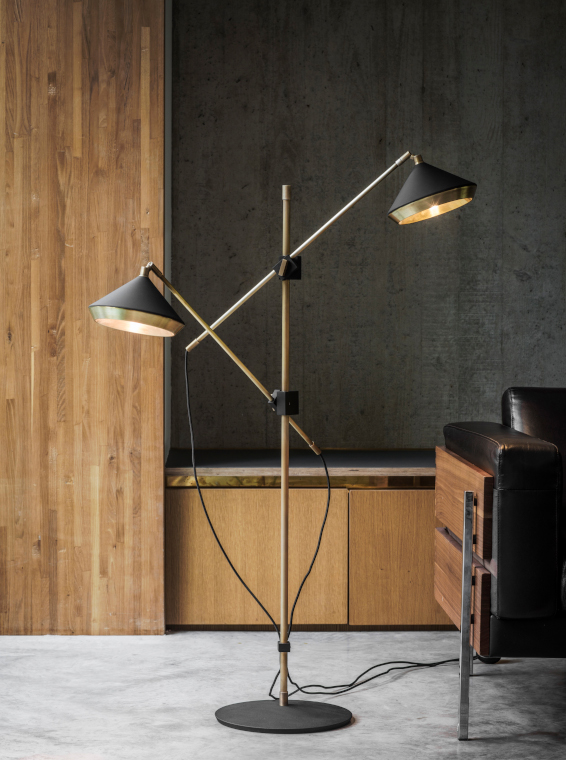
What is the enduring appeal of art deco and mid-century styling? For me, the appeal is its sleek, linear, often symmetrical and geometric streamlined looks. The era was wonderfully creative and unapologetically glamorous – the silhouettes, luxurious materials and sophisticated palettes are timeless.
Do you offer bespoke as well as custom pieces? Yes, because we own our factory and all of our pieces are handmade, we have the ability to offer custom variations – different sizes and finishes etc. We also work with architects and interior designers globally to create bespoke versions of our designs to suit both commercial and retail spaces.
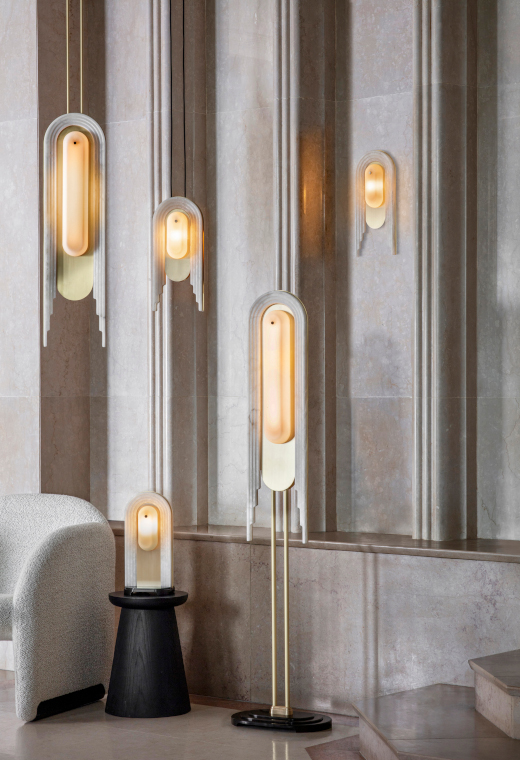
What is your favourite piece in the Bert Frank collection? My favourite piece is always the newest piece, so that would be Vima which recently launched during the London Design Festival 2021. It’s a classic Bert Frank design with brass at its heart as well as acid-etched opal glass and alabaster which frames the design and features a stunning stepped detail. It’s one of our most challenging designs to date from an engineering perspective and size wise, the pendant and floor lamp tip the scale on being some of the largest pieces we have ever made. With Vima I really wanted to make a statement and I think we achieved that.
Vima aside, Shear is the design that started the Bert Frank journey. Like all first children you develop a special affection for them.
What is your favourite possession? At the moment, my favourite possession is a Junghans Max Bill watch, the German manufacture hired Bauhaus designer Max Bill in 1961 to design a new time piece for them and it is simply stunning. It is so clean and simple and perfectly epitomises the Bauhaus ethos, that I am obviously a huge fan of, that I find myself reaching for it every day.
